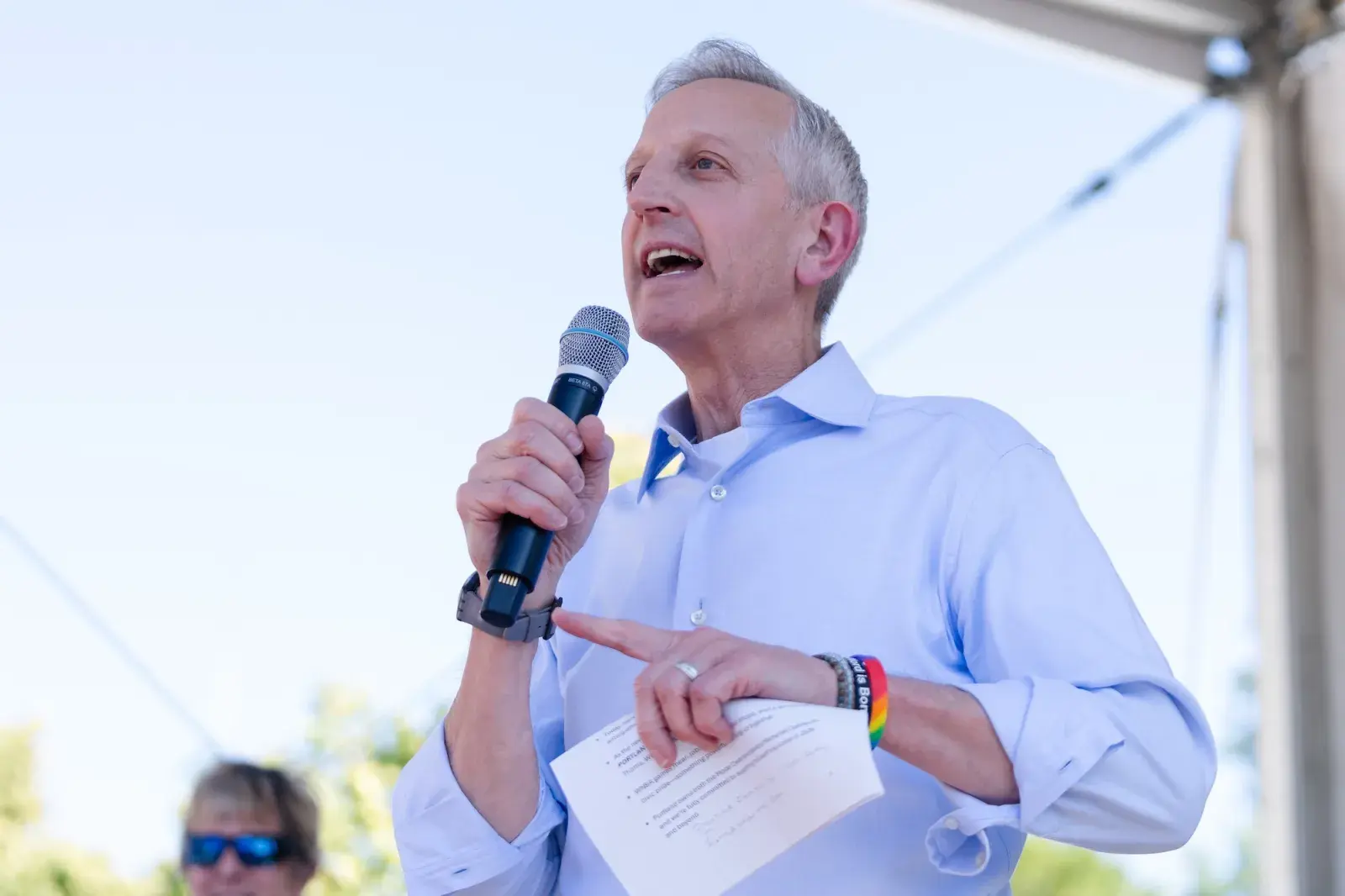A Chain of Mistakes Leading to Danger
In safety management, there’s a concept known as the “accident chain” — a series of small mistakes or overlooked hazards that, when linked together, lead to disaster. As the former CEO of one of North America’s safest freight companies and now as Portland’s mayor, I’ve learned to recognize these warning signs long before catastrophe strikes.
Earlier this month, I was called to meet with Homeland Security Secretary Kristi Noem and Trump adviser Corey Lewandowski at Portland’s Immigration and Customs Enforcement (ICE) facility. What I found was alarming — a scene that could serve as a case study in how dysfunction breeds danger.
The grounds were strewn with overflowing dumpsters, discarded body armor, and crowd-control munitions left unsecured. Inside, a broken HVAC system had turned the building into a stifling, volatile environment for both workers and detainees. This was not the image of professionalism or preparedness that any public agency should project. It was chaos — a disaster waiting to happen.
Also Read
A Culture of Neglect and Secrecy
It’s no wonder Secretary Noem has refused to grant access to regional journalists seeking to inspect the facility. Instead, she has chosen to bring along a coterie of partisan influencers and ideological allies. What they witnessed — and what the public has been denied — is a crumbling operation that endangers everyone within its walls.
The frontline ICE personnel I met that day were overworked, underpaid, and demoralized. Many had gone without pay due to the prolonged government shutdown. They were making life-altering decisions under extraordinary stress, often without proper rest or support. As someone who’s managed thousands of employees in high-risk industries, I recognize this for what it is — a system primed for human error and tragedy.
Dangerous Words, Dangerous Outcomes
In business, I learned that leadership through fear and intimidation never yields excellence. Only patience, purpose, and training create real results. Unfortunately, the rhetoric from the current administration has been the opposite: threats, bravado, and reckless talk of “full force.”
We’ve heard language invoking the Insurrection Act, suggesting the use of Portland as a “training ground” for the U.S. military, and framing dissent as sedition. Words like these have consequences. They erode trust, escalate tensions, and encourage misconduct among those tasked with enforcing the law.
Portland’s Flashing Red Warnings
Our city has seen firsthand what happens when inflammatory language and poor oversight collide. Videos show teenagers pepper-sprayed without provocation, elderly citizens knocked to the ground, and chemical agents deployed indiscriminately — forcing the evacuation of an entire school.
Perhaps most chillingly, a federal agent reportedly threatened to shoot an ambulance driver attempting to transport an injured protester. While I’ve been told some disciplinary actions have followed, no transparency has been provided. Were these agents held accountable or simply reassigned elsewhere to repeat the same behavior? We don’t know — and that uncertainty fuels further mistrust.
Lost Opportunities and Failed Leadership
Secretary Noem’s recent visit could have been an opportunity for cooperation. We share common goals: fighting fentanyl distribution, human trafficking, and other serious crimes that threaten our communities. Federal authorities bring resources local agencies cannot match.
Instead, her visit was a political spectacle — an expensive, taxpayer-funded photo opportunity designed to prop up the fiction of “domestic terrorism” in Portland. Rather than addressing real issues, the administration continues to chase headlines and invent enemies.
This misdirection has diverted the Department of Homeland Security (DHS) from its founding values: integrity, accountability, and service before self. Can anyone in the administration honestly claim those principles still guide DHS when its top officials tolerate misinformation, mismanagement, and abuse?
Mounting Risks Inside ICE
The warning signs extend beyond Portland. Nationwide, ICE has embarked on a massive recruitment surge, lowering standards and offering record signing bonuses. Such incentives risk attracting individuals motivated by money rather than mission.
At the same time, deaths inside ICE facilities are increasing, the most recent involving a 67-year-old Jordanian national. Meanwhile, public confrontations between ICE agents and civilians are escalating due to poor tactics and decision-making.
These are all links in the accident chain — and once connected, they will lead to tragedy unless immediate corrective action is taken.
Choosing a Better Path
The administration’s reliance on force and intimidation betrays its weakness, not its strength. Are our national leaders so fragile that they cannot tolerate peaceful protest? Are they so insecure that military helicopters must rattle the windows of our neighborhoods to prove their authority?
The answers lie in leadership — the kind that listens, learns, and leads by example rather than coercion. Portland has pioneered innovative approaches in crowd management, de-escalation, and community dialogue. Our police are trained to higher standards in identification, body-camera use, and accountability than many federal counterparts.
The federal government could learn from these efforts instead of undermining them.
A Final Warning
If I could speak directly to Secretary Noem, I would say this:
Every accident is preventable. But prevention requires humility, honesty, and the courage to change course.
Right now, the ICE facility in Portland is more than a bureaucratic failure — it’s an ethical and operational time bomb. The conditions I saw and the culture that sustains them are unsustainable.
Secretary Noem still has time to act, to restore integrity to her department, and to protect the public she serves. But the accident chain is growing longer by the day, and the window to prevent disaster is rapidly closing.












